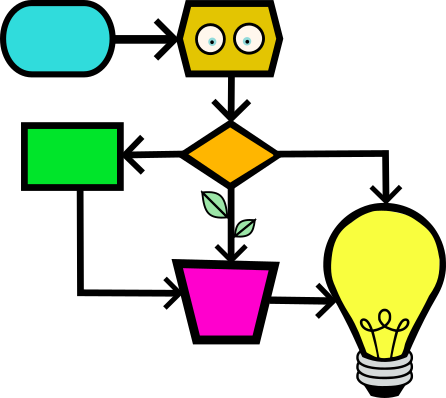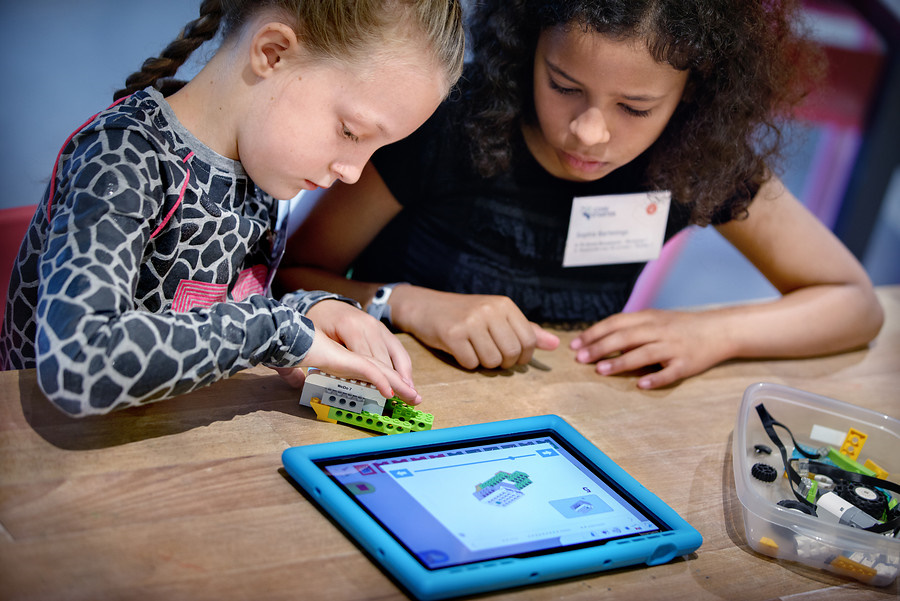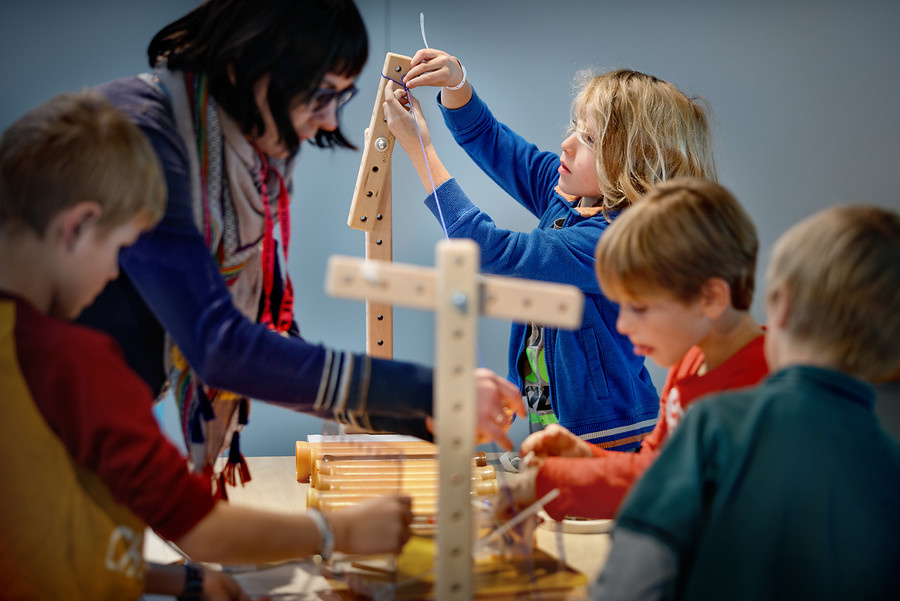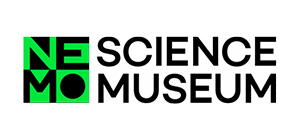
Computational Thinking is a set of skills that helps to solve problems by proposing step-by-step solutions that can be carried out by a person or a computer. Computational Thinking is not thinking like a computer but the opposite, being able to tell a computer what to do to solve a problem.
Decomposition: dividing a complex problem or system into smaller parts that are easier to understand. We can divide a complex and/or big task or data (e.g. modelling a student) into simpler and smaller tasks or data components (e.g. personal data and data related to his/her courses). This allows us to work in parallel, define the tasks in more detail, check the partial results of these small tasks, etc.
Pattern recognition: finding similarities between problems or systems that help to use previous solutions. Identifying patterns in information allows us to process it more efficiently (i.e. data of students' courses have in common the name of the course, the number of hours, the name of the teacher and the grade).
Abstraction: separating the fundamental from the accessory aspects to ignore irrelevant details to the solution of the problem or the understanding of the system. Following the example of the student, we focus on the common characteristics of all students instead, the ones that define the student category, instead of focusing on individual characteristics.
Algorithms: developing a step-by-step solution to the problem that usually involves sequences, loops and alternatives. Algorithms are the recipe to be followed to obtain the desired final result. A typical example of an algorithm is a cooking recipe, a set of steps to be followed systematically manipulating the ingredients.


The four CT-foundations can be subdivided into smaller concepts, for example to understand and work with algorithms, you need to understand functions, loops and conditionals. These concepts and understanding how to use them can be grouped into different levels according to their difficulty.
But knowing these concepts is not enough; to solve the challenges or problems to develop CT also requires other general skills such as collaboration, creativity, critical thinking or communication. When developing CT we are providing students with skills and competencies to face challenges and problems in a specific way, the way computers do. Therefore, it is important to provide them with challenges and projects in different contexts that allow them to put these skills into practice. In this sense, when developing CT, the most important thing is not how to use a specific tool (such as Scratch or robot), but how to learn how these tools can be used to solve problems. Technologies are not the goal, but the means to achieve those goals. The objective is to properly integrate the concepts, methods and tools related to CT in other areas of knowledge.
Within the learning of CT, programming is a language of expression, and robotics is an instrument of representation. Both are necessary for problem solving. Through interdisciplinary projects, we can work on the objectives and contents of the educational curriculum using both programming and robotics. It is the way to contextualise the learning of CT in meaningful learning experiences.
The integration of CT in the classroom should be done progressively and after a reflection by teachers on the objectives, skills and content to be developed. There are many ways to approach these first steps. The roadmap below is designed to help you choose the activity that fits the best your situation.
We recommend a progressive introduction of CT in education. Starting with one or a few activities each academic year that are implemented in the classroom, evaluated and modified according to the experience and results obtained.

NEMO's mission is to bring science and technology closer to the public in an interactive and accessible way, in the museum, at schools, nationwide and online. Science and technology enable us to better understand the world and ourselves, to develop as human beings, and to prepare the world for the future. NEMO inspires curiosity in both young and old about the power, the importance and the nature of science and technology. NEMO Science Museum is an interactive, informal learning environment in which the public comes in contact with science and technology. Visitors see, hear and experience how scientific phenomena and technology play an important part in their lives. NEMO works closely with the fields of science and education.

With a long and well established tradition, founded in 1886 as a higher education institution, the University of Deusto has a mission and educational goal firmly grounded in academic excellence and social responsibility, aiming at generating economic sustainable growth and making positive contributions towards the construction of fairer and more inclusive and humane societies. LearningLab research group at the Faculty of Engineering works to improve STEM learning and teaching in formal, non-formal and informal settings. We develop R&D projects to engage and raise the interest of young people in STEM related areas through innovative methods and tools.

Tinkersjop is a small science centre in Curacao, where applied STEM is practiced. Where children starting at the age of 8 and adults can do experiments, perform technological activities and have hands on experience with science, concepts such as mathematics, technology, construction and physics. Through tools and materials young and old are exposed to the concept of active learning, science, investigation, building, exploring, discovering. the visiting child regains the love for learning in a different way, which increases the study success. In addition, children will have more interest in science subjects and professions and they are stimulated and encouraged to become self-explorative and participatory.
NEMO Science Museum is coordinator of this project. Would you like to be part of the project or do you have other questions, please contact NEMO Science Museum.



